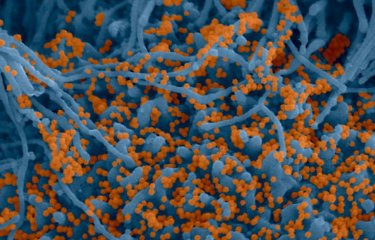-
Document de presse | 2014.08.27
Potential strategies for limiting the hepatitis C epidemic in Egypt
In the fight against hepatitis C, directing preventive and curative interventions towards sufferers of chronic diseases requiring regular medical care would be an effective means of reducing transmission of the hepatitis C virus (HCV) in Egypt, and undoubtedly also in other countries with limited resources. This theory has arisen from a mathematical modeling study carried out as part of the ANRS...
-
Document de presse | 2014.09.01
Mental states control the integration of new neurons in the adult brain
Although it has been known for several years that the adult brain is capable of producing new neurons, how these neurons are integrated into existing, functional nerve circuits has hitherto remained a mystery. Scientists at the Institut Pasteur and the CNRS have just shown that new neurons set up a denser network of connections with the rest of the brain in contexts of active (as opposed to...
-
Document de presse | 2014.08.31
The Institut Pasteur steps up its action against Ebola
Ever since the Ebola virus was identified in Guinea in March 2014, the designated WHO Collaborating Centers within the Institut Pasteur and Institut Pasteur International Network have been assisting the international aid initiative via diagnostic support and epidemiological surveillance. Now, faced with the seriousness and spread of the epidemic, the Institut Pasteur and Institut Pasteur...
-
Document de presse | 2014.09.09
Highly regulated therapeutic target shows promise in the search for new antimalarial treatments
Artemisinin is currently the most effective malarial treatment available. However, the recent emergence in South-East Asia of artemisinin-resistant parasites strengthens the urgent need to identify a new generation of antimalarial drugs. In this context, scientists at the Institut Pasteur and CNRS have determined the three-dimensional structure of a promising new therapeutic target for malaria:...
-
Document de presse | 2014.04.17
Inserm and the Institut Pasteur identify a new variant of Ebola virus in Guinea
Press releaseParis, April 14th, 2014 In an article which appeared in The New England journal of Medicine on 16 April, researchers from Inserm (Jean Mérieux-Inserm BSL-4 Laboratory, Lyon) and the Institut Pasteur have published their initial findings on the characteristics of the Ebola virus discovered in Guinea. Initial virological investigations enabled them to identify Zaire ebolavirus as...
-
Document de presse | 2014.09.04
Autism: SHANK gene may indicate the severity of the disorder
Thanks to a large-scale study conducted on nearly 1,000 autistic patients, scientists at the Institut Pasteur, the French National Center for Scientific Research (CNRS), Paris Diderot University and the FondaMental Foundation succeeded in mapping the clinical incidence and impact of certain genetic mutations linked to the cognitive and intellectual abilities of the patients. Mutations affecting...
-
Document de presse | 2014.09.23
Inserm, Institut Pasteur, Fondation Mérieux and the Chinese Center for Disease Control and Prevention Reinforce their Cooperation in the Fight Against Emerging Pathogens
On the occasion of the First China-France High-Level Mechanism of Dialogue on People-to-People Exchanges, a Memorandum of Understanding was signed September 18th between the French National Institute of Health and Medical Research (Inserm), Institut Pasteur, Fondation Mérieux and the Chinese Center for Disease Control and Prevention. Press releaseParis, September 24th, 2014 This...
-
Document de presse | 2014.10.06
Cystic fibrosis: how a bacterium manipulates its host to eradicate an opponent
The main cause of death in patients suffering from cystic fibrosis is respiratory infection caused by different bacterial populations, which vary according to the age of the patient. Scientists at the Institut Pasteur and Inserm have identified a novel mechanism used by the Pseudomonas aeruginosa bacterium to hijack the immune system of its host in order to eradicate another bacterium,...
-
Document de presse | 2014.10.13
Human papillomavirus linked to auto-immune disease
Erosive oral lichen planus (OLP) is an auto-immune disease affecting skin and mucous membranes which results in an abnormal immune response against mucocutaneous cells. Today, scientists at the Institut Pasteur, Inserm, Paul Sabatier University (Toulouse) and the CNRS have proven that the immune cells involved in OLP are the same as those activated during an immune response to human...
-
Document de presse | 2014.10.27
A bioinformatics tool to monitor the resistance and virulence of Klebsiella pneumoniae bacteria
By sequencing the genomes of several strains of Klebsiella pneumoniae, scientists from the Institut Pasteur and the CNRS have revealed their genetic profile and pinpointed the genes responsible for their multiple antibiotic resistance and virulence. They have used these results to compile a database for the scientific community, providing high-resolution genetic fingerprints and information on...


